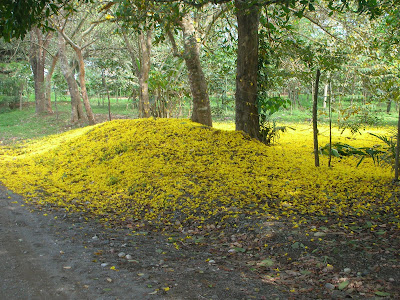I’m a birder now. Not for finally laying eyes on the secretive Resplendent Quetzal, nor for stalking the wily Motmot (been there, done that). No, I earned my wings for killing one. A chicken.
I’m mostly a vegetarian now. Not out of concern for the tender sensibilities of my fellow creatures; rather from caring for the planet. After power generation, industrial meat production is the next largest source of greenhouse gas emissions, methane farts and all (transportation ranks third). Not to mention the absurdly large portion of the earth's surface devoted to making meat, and all the habitat destruction, groundwater contamination, etc. For more grim meaty facts, check out Michael Pollan’s Omnivore’s Dilemma, or this TED talk by food writer Mark Bittman; also on YouTube (by the way, if this your first visit to TED, go explore—refined essence of brilliance from the world’s best and brightest).

All the same, you gotta eat, right? Pablo, owner of the small tropical homestead where I’m staying, keeps poultry. A paltry few. Layers and fryers. They eat kitchen scraps; a convenient and tidy relationship. The layers are easy, and truly fresh eggs are a treat. But when a Boa Constrictor started picking off the fryers, we figured it was our turn.
Eat what you kill, kill what you eat. So I did the deed (they really do keep flapping and twitching long after they’ve lost their heads). Then you pluck ‘em. Boiling hot water scalds the skin, and feathers come out in messy wet handfuls. Smells like wet dog. Then I steeled myself for the gutting. “Just like cleaning a fish,” I told myself as I reached in. Only it was warm inside, and made sucking sounds as I pulled fistfuls of entrails out of the cavity.

Gradually, it started looking more like the chickens I was familiar with—naked and headless! I was finally on firmer ground, foodwise. A mess of minced garlic, handful of garden-fresh chopped basil, olive oil, salt, pepper; work it under the skin and into the cavity; roast for an hour at 425. Voila!
I wish I could say it was a tender and delectable treat. But this was one tough old bird. Tasty, but chewy. Thinly sliced, the breast meat will be good for a few sandwiches. The rest should make some fine chicken stock for soups and sauces.
Anyway, that’s how I earned my feathers. Braawwk!
 The sound of a motor before dawn was a bit odd; I figured someone was just getting out here early. Followed by anxious shouts; maybe stumbling along the jungle trail, after an all night drinking bout? But paddling out on the point that morning, the salt air was tinged with diesel. And then there was the fuel drum floating in the tideline...
The sound of a motor before dawn was a bit odd; I figured someone was just getting out here early. Followed by anxious shouts; maybe stumbling along the jungle trail, after an all night drinking bout? But paddling out on the point that morning, the salt air was tinged with diesel. And then there was the fuel drum floating in the tideline... It was Leo who alerted me to the cause. A vessel had grounded out on the point, barely reaching the inside of the bay, where it was scuttled in the shorebreak.
It was Leo who alerted me to the cause. A vessel had grounded out on the point, barely reaching the inside of the bay, where it was scuttled in the shorebreak. Visions of two years before, when Leo's partner Stu alerted me to a boat grounded out on the very rocks of the same point. A drug runner from Colombia! One of a trio of boats running up the coast, when (as the story goes) a U.S. Coastguard helicopter gave chase, so the three took their chances on different routes. Apparently, the one grounded on the point was just the fuel carrier (damn!). It had jettisoned its fuel drums, which littered the bay, but the triple tandem mounted 200hp Yamaha outboards on the stern gave away its mission. The only remaining cargo consisted of spare engine parts, and cans of tuna "hecho en Colombia".
Visions of two years before, when Leo's partner Stu alerted me to a boat grounded out on the very rocks of the same point. A drug runner from Colombia! One of a trio of boats running up the coast, when (as the story goes) a U.S. Coastguard helicopter gave chase, so the three took their chances on different routes. Apparently, the one grounded on the point was just the fuel carrier (damn!). It had jettisoned its fuel drums, which littered the bay, but the triple tandem mounted 200hp Yamaha outboards on the stern gave away its mission. The only remaining cargo consisted of spare engine parts, and cans of tuna "hecho en Colombia".  This year's shipwreck was not so sinister––merely sad. A fishing vessel out of Quepos, just up the coast, had experienced mechanical problems and was running to shelter. Almost made it, too, all but for that gnarly nub of rock out in front. Free dorado for lookers-on, as there was no way these poor fellows were going to get their catch to market.
This year's shipwreck was not so sinister––merely sad. A fishing vessel out of Quepos, just up the coast, had experienced mechanical problems and was running to shelter. Almost made it, too, all but for that gnarly nub of rock out in front. Free dorado for lookers-on, as there was no way these poor fellows were going to get their catch to market.















